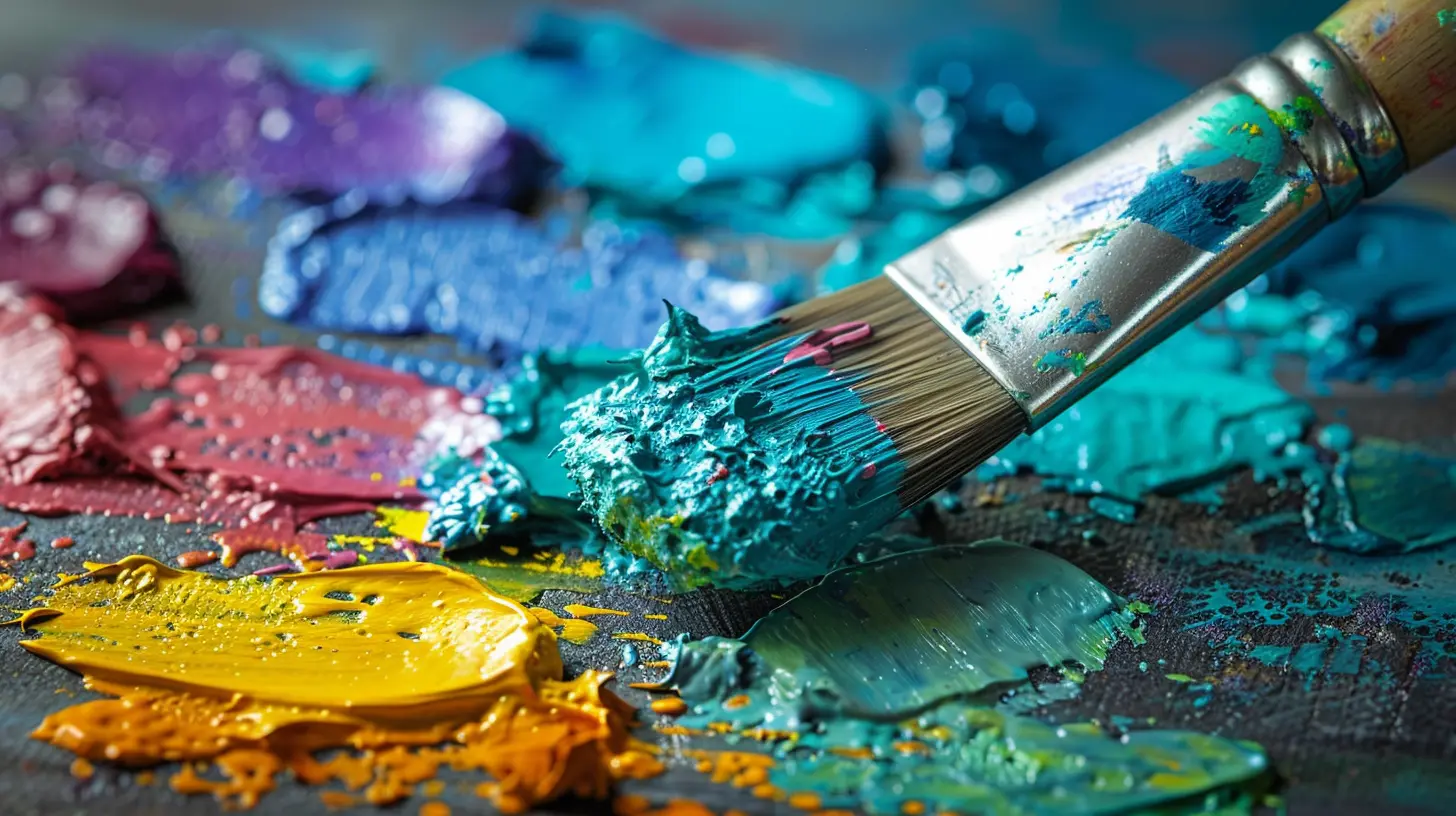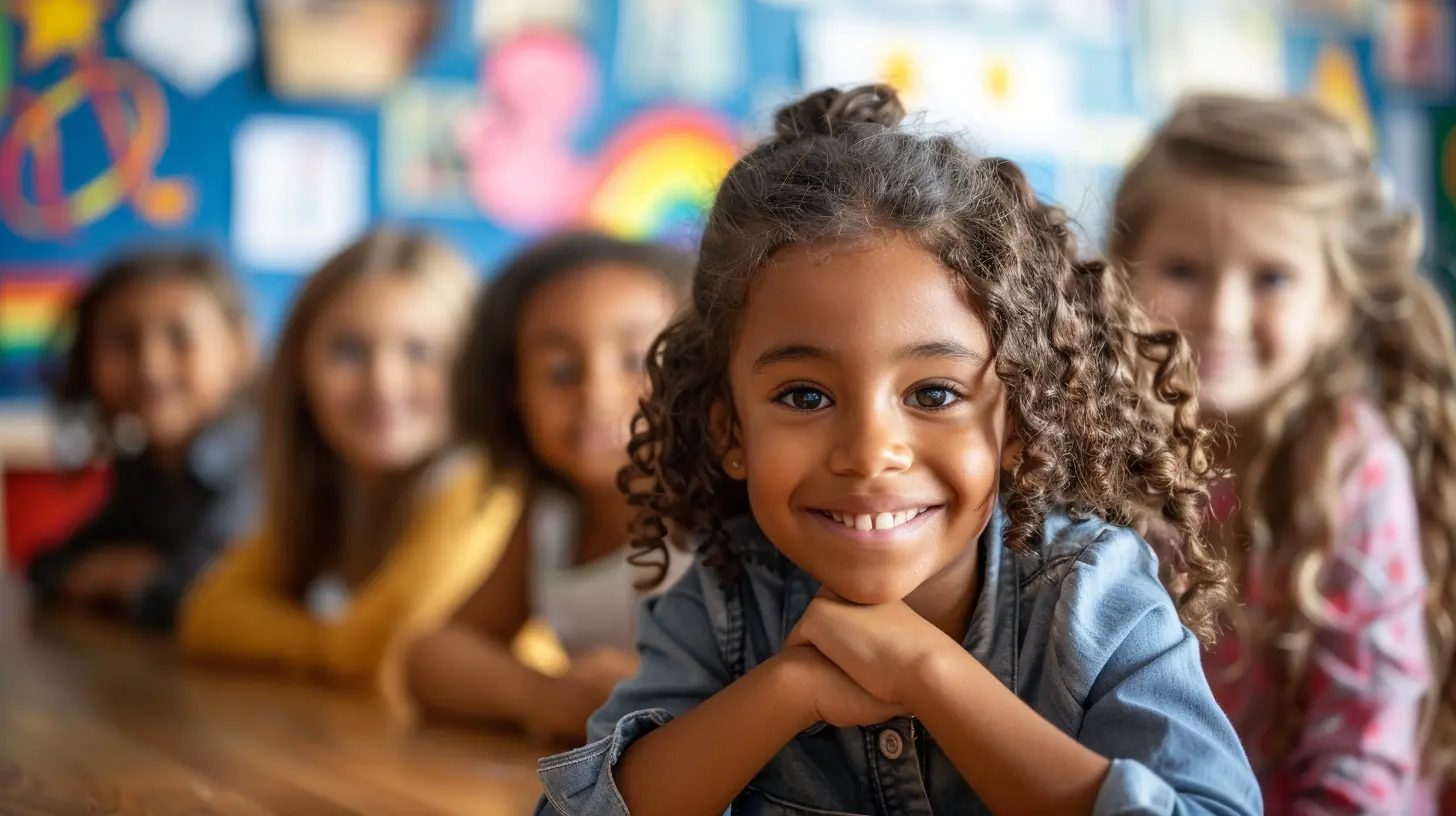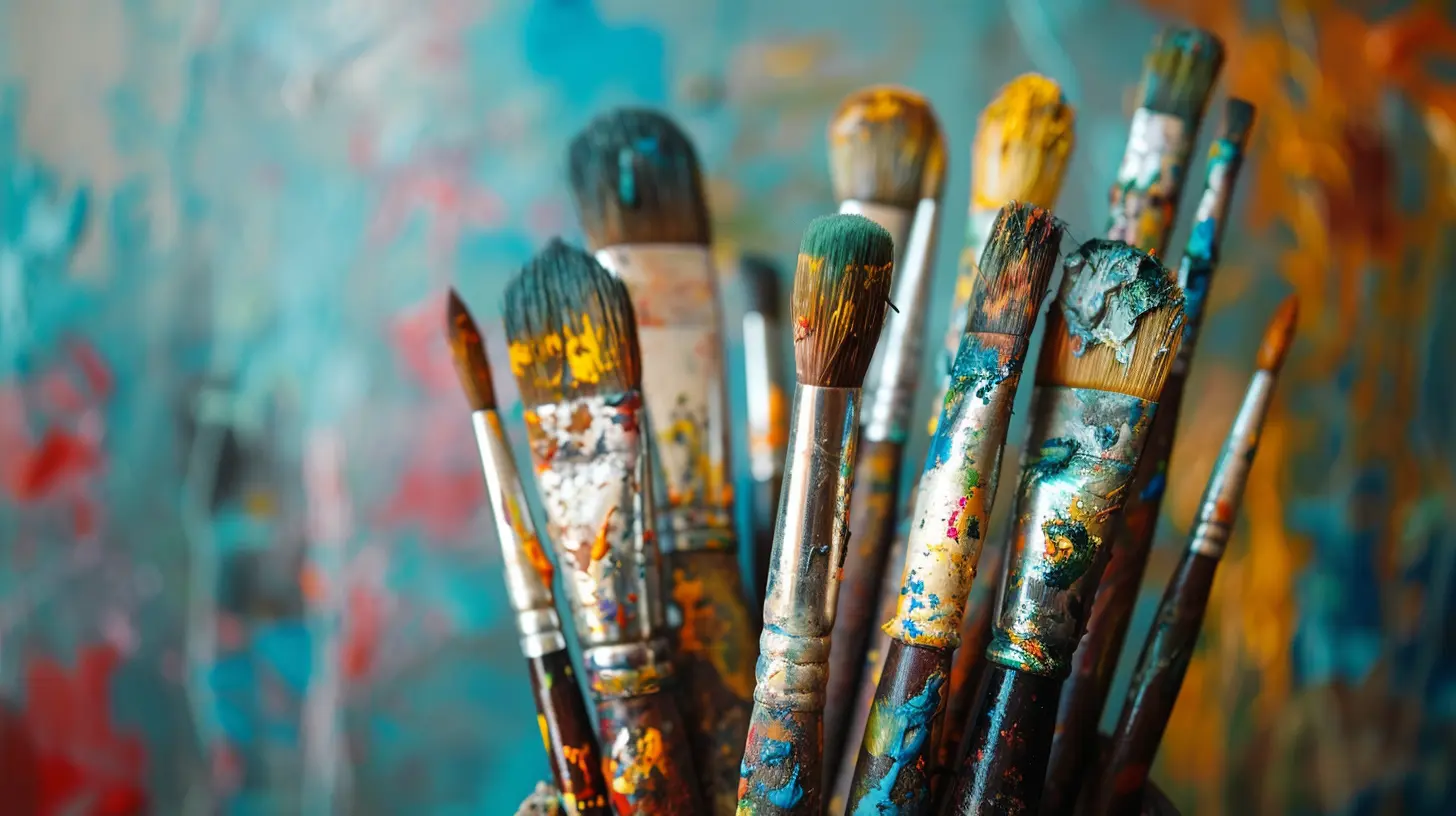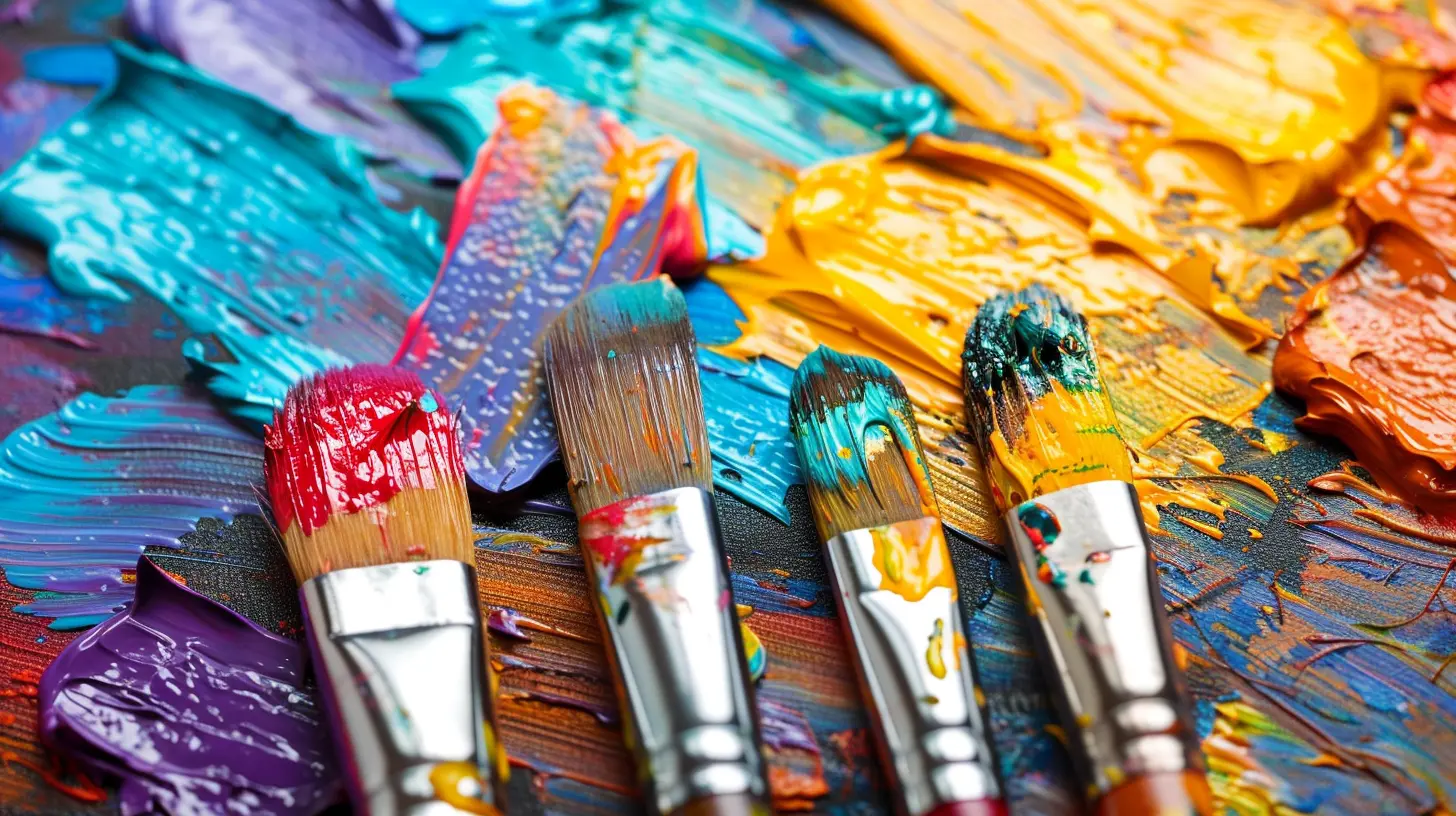The Benefits of Art Education for Cognitive Development
31 December 2024
Art has long been considered a form of self-expression, emotion, and creativity. But did you know that it plays a significant role in cognitive development as well? Yes, engaging in art education isn’t just about creating pretty pictures — it actually helps in shaping how we think, problem-solve, and approach life in general. Art education is not just a luxury; it’s an essential part of a well-rounded education.
In this article, we'll explore the numerous benefits of art education on cognitive development, and why it’s important for children, teens, and even adults. So grab a cup of coffee and let's dive into why art is more than just an elective in school; it’s a brain booster!

What is Cognitive Development?
Before we dive into the benefits, let’s first understand what cognitive development really means. Cognitive development refers to the growth of a person’s ability to think and reason. This includes skills like problem-solving, critical thinking, memory, attention, and language development. Essentially, it's how we learn to think and process information.Now, here’s the cool part — art education has a direct impact on all these areas. Whether it's drawing, painting, sculpting, or even theater arts, engaging in art activities can give your brain a serious workout.

Art Education Boosts Problem-Solving Skills
Ever tried to draw a cat and ended up with something that looks like a blob? Don’t worry, we’ve all been there! The point is, creating art demands problem-solving. How do you make this line straighter? How do you mix colors to make the perfect shade of blue? How do you turn an idea in your head into something tangible?Problem-solving is a huge part of cognitive development, and art education encourages it in spades. When students work on art projects, they need to make decisions, experiment with materials, and find solutions to creative challenges. Every brushstroke teaches you to think critically and make decisions — skills that are transferable to almost every area of life.
Art Encourages Flexibility in Thinking
Art doesn’t always go as planned, and that’s okay! When a sculpture isn’t turning out the way you envisioned or a painting takes an unexpected turn, you have to adapt. This flexibility in thinking — the ability to pivot and come up with new solutions — is an essential cognitive skill.In fact, research shows that people who engage in creative activities like art are better at thinking "outside the box." They’re more likely to approach problems from multiple angles and come up with innovative solutions.

Enhancing Memory and Attention Through Art
Did you know that creating art can improve your memory? Yup, it’s true! When you’re engaged in creating something, you’re actively using several parts of your brain — including those responsible for memory and attention.Visual Memory
Think about an art project where you had to replicate something from memory. Whether it's sketching a landscape from a recent hike or trying to remember the details of a still-life set-up, this taps into your visual memory. Regularly engaging in art helps to strengthen this skill, which is useful not only in creative fields but in everyday life.Attention to Detail
When you’re working on a piece of art, especially something intricate like shading or drawing fine lines, it requires a high level of attention to detail. This kind of focus is essential for cognitive development. Kids and adults who practice art regularly often show improved concentration in other areas, such as reading and math.
Art Stimulates Emotional Intelligence
Art isn’t just about thinking and solving problems; it’s also about feeling. Engaging in art activities allows people to express emotions that they might not be able to put into words. This form of self-expression is important for emotional regulation and development.Understanding and Expressing Emotions
When students are encouraged to explore their feelings through art, they learn to better understand their own emotions. Whether it’s through painting, writing poetry, or acting, art offers a safe space for emotional exploration.For children, this can be a healthy way to process complex emotions like sadness, frustration, or excitement. As they grow older, this emotional awareness translates into higher emotional intelligence — the ability to understand and manage emotions in themselves and others.
Empathy and Perspective-Taking
Art also encourages empathy. When students engage in collaborative art projects or create works that tell a story, they often have to step into someone else's shoes. Whether they’re depicting a historical event, a character from literature, or a personal experience, they are practicing perspective-taking. This is crucial for developing empathy, which is an important aspect of cognitive and social development.Art and Language Development
Believe it or not, art can also improve language skills. You might be wondering, "How can painting or drawing help with language?" Well, it turns out that the process of creating art often involves storytelling, descriptive language, and communication.Storytelling Through Art
Art often tells a story, whether it's a painting that captures a scene from a book or a sculpture that represents a concept. This form of visual storytelling helps children develop their narrative skills. When discussing their artwork, they’re also improving their vocabulary and ability to articulate complex ideas, which in turn boosts language development.Verbal and Written Expression
Talking about art is another way to enhance language skills. When students describe their art, explain their choices, or critique a piece of work, they’re practicing verbal expression. Additionally, writing about art — whether it’s an artist's biography or an art critique — helps improve written language skills. Both forms of expression are essential for cognitive development.
Fostering Creativity and Imagination
Art education is, of course, a breeding ground for creativity. But creativity isn’t just about coming up with artistic ideas; it also plays a vital role in cognitive development.Thinking Creatively
When kids (or adults) are given the freedom to create, they learn to think in new and innovative ways. Creativity requires you to connect ideas, challenge norms, and see the world from different perspectives. This kind of thinking is essential for problem-solving, innovation, and even success in fields like science and engineering.For instance, some of the greatest scientific breakthroughs have come from people who were able to think creatively, like Albert Einstein, who was also an amateur violinist. In many ways, art and science go hand in hand — both require imagination, curiosity, and the ability to think beyond the obvious.
Risk-Taking and Experimentation
Creating art often involves taking risks. Should you use a bold color? What happens if you mix two mediums? This experimentation teaches students that it’s okay to try new things and even fail sometimes. In fact, failure is seen as a stepping stone to success in the world of art, which builds resilience and confidence — two important aspects of cognitive development.Art Education and Academic Achievement
Here’s a surprising fact: students who engage in art education often perform better academically. Numerous studies have shown that students who participate in the arts tend to score higher in subjects like math, reading, and science.The Arts and STEM
It might seem like art and STEM (Science, Technology, Engineering, Math) are worlds apart, but they’re more connected than you might think. Art education fosters skills like critical thinking, creativity, and problem-solving, all of which are vital for success in STEM fields. This is why many educators advocate for STEAM (Science, Technology, Engineering, Arts, Math) rather than just STEM.Students who are exposed to both art and STEM are better equipped to approach problems from different angles, think creatively, and come up with innovative solutions.
The Long-Term Benefits of Art Education
The cognitive benefits of art education extend far beyond childhood. In fact, engaging in art activities throughout life can help to keep the brain sharp as we age. Studies have shown that older adults who participate in art are less likely to experience cognitive decline, and some even suggest that it can help to delay the onset of dementia.Lifelong Learning
Art encourages lifelong learning. Whether you're attending a pottery class at 60 or picking up a paintbrush for the first time in your 40s, engaging in creative activities helps to keep the brain active and engaged. It’s never too late to start reaping the cognitive benefits of art education!Conclusion: Art as a Cognitive Superpower
So, there you have it! Art education is not just about creating beautiful things; it’s a cognitive powerhouse that enhances problem-solving, memory, attention, emotional intelligence, language development, creativity, and even academic achievement. Whether you’re a parent considering art classes for your child or an adult looking to pick up a new hobby, remember that engaging in art isn’t just for fun — it’s also a workout for your brain.Art is more than just an elective or a pastime. It’s a powerful tool for cognitive development that can improve your quality of life in countless ways. So go ahead, pick up that paintbrush, sketchpad, or block of clay. Your brain will thank you!
all images in this post were generated using AI tools
Category:
Art EducationAuthor:

Olivia Lewis
Discussion
rate this article
18 comments
Zarek Barker
Art education significantly enhances cognitive skills and critical thinking.
March 28, 2025 at 1:30 PM

Olivia Lewis
Thank you for your comment! I completely agree—art education fosters essential cognitive skills and promotes critical thinking, making it invaluable for overall development.
Heidi Spencer
This article highlights the intriguing link between art education and cognitive growth! I'm curious about how different art forms impact various cognitive skills. It would be fascinating to explore specific examples of these benefits in real-world contexts.
February 22, 2025 at 1:51 PM

Olivia Lewis
Thank you for your interest! Different art forms, such as music, visual arts, and theater, can enhance skills like problem-solving, critical thinking, and creativity. For instance, music education has been linked to improved math skills, while visual arts can enhance observational and analytical abilities. Exploring these real-world examples could provide valuable insights!
Rosalyn Henson
Art education significantly enhances cognitive development by fostering critical thinking, creativity, and problem-solving skills. Engaging with various artistic mediums helps students develop a deeper understanding of complex concepts, improving their ability to analyze and synthesize information across disciplines.
February 14, 2025 at 8:31 PM

Olivia Lewis
Thank you for highlighting the crucial role of art education! I completely agree that engaging with the arts fosters essential cognitive skills, enabling students to think critically and creatively across various subjects.
Bella Lane
Art education fuels creativity, enhancing cognitive skills and enriching minds!
February 3, 2025 at 7:45 PM

Olivia Lewis
Thank you! Absolutely, art education plays a crucial role in fostering creativity and enhancing cognitive abilities.
Jacqueline McPhee
This article beautifully highlights the transformative power of art education. It’s inspiring to see how creativity nurtures cognitive growth in children, fostering essential skills that extend beyond the classroom. Thank you for sharing!
January 27, 2025 at 8:13 PM

Olivia Lewis
Thank you for your kind words! I'm glad you found the article inspiring and that it resonated with the importance of art education in fostering creativity and cognitive growth.
Sofia McTiernan
What a fantastic read! Art education not only sparks creativity but also enhances cognitive skills in children. It's inspiring to see how it nurtures young minds and fosters a love for learning!
January 23, 2025 at 9:10 PM

Olivia Lewis
Thank you! I'm glad you enjoyed the article and appreciate your insights on the vital role of art education in fostering creativity and cognitive growth in children!
Lira McKinney
Art education enhances creativity and critical thinking.
January 15, 2025 at 7:56 PM

Olivia Lewis
Absolutely! Art education fosters creativity and critical thinking, serving as key drivers for cognitive development and problem-solving skills.
Sable Moses
Insightful read, thank you!
January 8, 2025 at 9:07 PM

Olivia Lewis
Thank you! I'm glad you found it insightful!
Solaria Gates
Art education is essential for cognitive growth, fostering creativity, critical thinking, and problem-solving skills that benefit students in every discipline.
January 5, 2025 at 5:11 AM

Olivia Lewis
Thank you for your insightful comment! I completely agree—art education plays a vital role in enhancing cognitive skills that are applicable across all academic disciplines.
Jessica Ross
This article beautifully highlights the vital role of art education in fostering cognitive growth. It’s inspiring to see how creative activities enhance critical thinking and problem-solving skills in learners. Thank you for sharing these insights!
January 4, 2025 at 9:16 PM

Olivia Lewis
Thank you for your thoughtful comment! I'm glad you found the insights on art education's impact on cognitive growth inspiring.
Harlow Underwood
Art education is essential; it enriches cognitive skills and fosters critical thinking.
January 4, 2025 at 4:45 AM

Olivia Lewis
Thank you for highlighting this! Art education indeed plays a vital role in enhancing cognitive skills and fostering critical thinking, making it an invaluable component of holistic education.
Liora Acevedo
This article beautifully highlights the profound impact of art education on cognitive growth. Engaging with art nurtures creativity and critical thinking, essential skills for lifelong learning and development.
January 3, 2025 at 9:58 PM

Olivia Lewis
Thank you! I’m glad you found the article insightful. Art education truly plays a vital role in fostering essential skills for lifelong learning.
Ryder McTiernan
Art education plays a crucial role in cognitive development, enhancing critical thinking, creativity, and problem-solving skills. By engaging with various art forms, students improve their ability to process information and express themselves effectively across disciplines.
January 3, 2025 at 1:08 PM

Olivia Lewis
Thank you for your insightful comment! I completely agree that art education significantly fosters critical thinking and creativity, essential skills for success in all areas of learning.
James McFarlane
This article highlights the essential role of art education in enhancing cognitive development. By engaging in creative processes, students improve critical thinking, problem-solving skills, and emotional intelligence. Integrating art into the curriculum not only fosters innovation but also nurtures well-rounded individuals, making it a vital component of modern education.
January 2, 2025 at 9:10 PM

Olivia Lewis
Thank you for your insightful comment! I completely agree that art education is crucial for fostering cognitive skills and nurturing creativity in students.
Calyx Bell
Art education nurtures creativity and critical thinking, vital components of cognitive development. Engaging with art encourages students to express themselves, explore new ideas, and approach challenges with innovative solutions. By fostering these skills, we equip young minds to thrive in an ever-changing world. Embrace the power of art in education!
January 2, 2025 at 4:29 AM

Olivia Lewis
Thank you for highlighting the essential role of art education in developing creativity and critical thinking. It's crucial for empowering students to navigate and innovate in a rapidly evolving world.
Kinsley Palmer
This article highlights the significant role of art education in enhancing cognitive development, fostering creativity, critical thinking, and improved problem-solving skills in students. Great insights!
January 1, 2025 at 9:39 PM

Olivia Lewis
Thank you for your feedback! I'm glad you found the insights on the importance of art education valuable.
Carson Lamb
Art education unlocks hidden pathways of the mind, weaving creativity with cognition. What secrets lie within the brush strokes and melodies? Discover how this transformative journey shapes not just skills, but the very essence of thought.
January 1, 2025 at 12:37 PM

Olivia Lewis
Absolutely! Art education enhances cognitive development by fostering creativity and critical thinking, unlocking new ways of understanding and expressing complex ideas.
Soraya Gibson
Art education nurtures creativity, enhancing cognitive skills and fostering lifelong learning and growth.
December 31, 2024 at 10:05 PM

Olivia Lewis
Thank you for your insightful comment! I completely agree—art education is essential for fostering creativity and supporting cognitive development throughout life.
MORE POSTS

How Virtual Reality Is Transforming STEM Learning

Learning Beyond the Classroom: Skills You Can Pick Up Anytime

The Role of Wearable Technology in Education

How Learning Management Systems are Personalizing Education

Lifelong Learning and Its Impact on Civic Engagement and Community

How to Build a Classroom Environment That Inspires Artistic Expression

Motivating Reluctant Learners: Tips for Teachers

How to Prioritize Topics When Studying for Exams

How to Scaffold Learning Objectives for Student Mastery

The Best Study Tools and Resources for Test Prep Success

Using Art and Creative Expression for Social-Emotional Learning